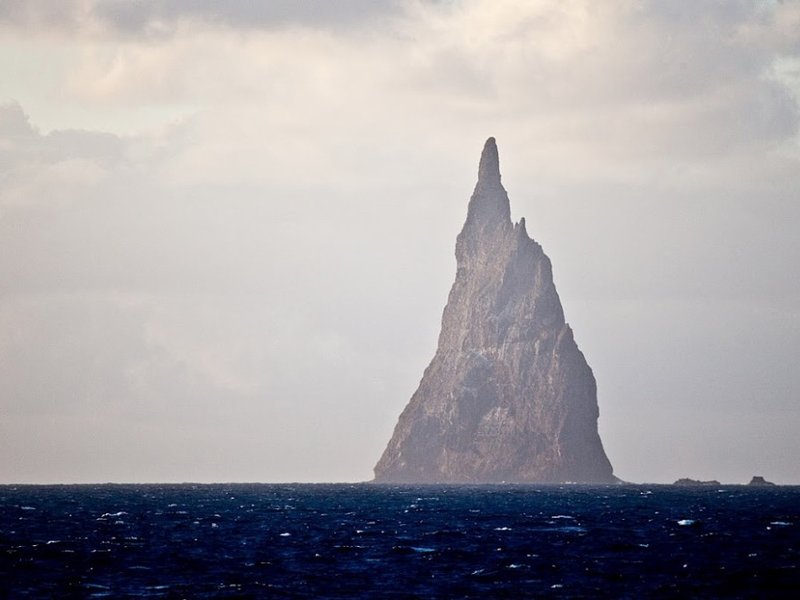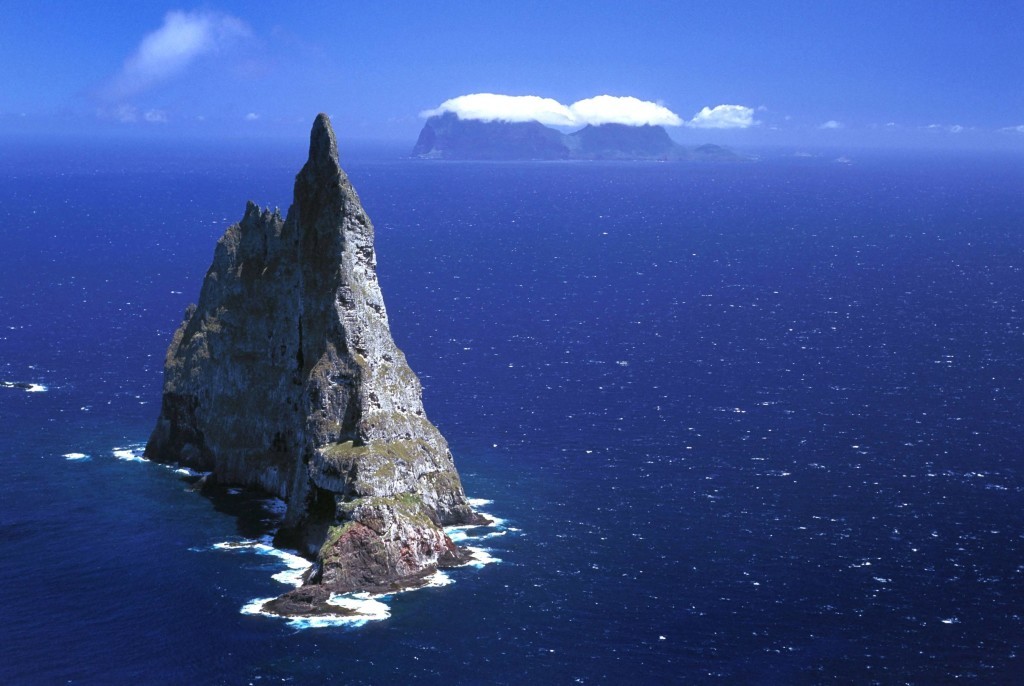Heard of Ball’s Pyramid? It’s Pretty Epic
One of the coolest rock features in the Pacific Ocean

Deep in the Pacific Ocean stands a huge spire of stone rising from the water and guess what, it’s been climbed. The seven-million-year-old 562-metre formation is the remnant of a shield volcano and caldera that stands about 20 kilometres southeast of Australia’s Lord Howe Island. It’s the tallest volcanic stack in the world.

The Climb: It was first attempted in 1964 by the Australian team, but they ran out of supplies and turned back. On Valentines Day 1965, Bryden Allen, John Davis, Jack Pettigrew and David Witham became the first to stand on top. Then in 1979, Smith climbed it with John Worrall and Hugh Ward and planted a New South Wales flag and declared it Australian territory.
Then in 1982, climbing was banned under amendments to the Lord Howe Island Act. Eventually all no one could access Ball’s Pyramid. Now a days, climbers are allowed to apply for a permit to climb Ball’s Pyramid and a few people every year has access.

The Name: The spire is named after Lieutenant Henry Lidgbird Ball after he discovered it in 1788. The feature was described in 1789 in the book The Voyage Of Governor Phillip To Botany Bay With An Account Of The Establishment Of The Colonies Of Port Jackson And Norfolk Island:
“There lies about four miles from the south-west part of the pyramid, a dangerous rock, which shows itself a little above the surface of the water, and appears not to be larger than a boat. Lieutenant Ball had no opportunity of examining whether there is a safe passage between them or not. The island is in the form of a crescent, the convex side towards the north-east. Two points at first supposed to be separate islands, proved to be high mountains on its south-west end, the southernmost of which was named Mount Gower, and the other Mount Lidgbird; between these mountains there is a very deep valley, which obtained the name of Erskine Valley; the south-east point was called Point King, and the north-west point, Point Phillip. The land between these two points forms the concave side of the island facing the south-west, and is lined with a sandy beach, which is guarded against the sea by a reef of coral rock, at the distance of half a mile from the beach, through which there are several small openings for boats; but it is to be regretted that the depth of water within the reef no where exceeds four feet. They found no fresh water on the island.”

The Stick Insect: Recently an insect was discovered on Ball’s Pyramid that was believed to be extinct. The “tree lobster” was last seen in 1920, but 24 were rediscovered in the early 2000s. Now, the tree lobster is thriving in zoos and might one day be released into the wild.
Ball’s Pyramid: The first ascent fixed hemp ropes on the pitches and the team agreed the style was not the best. “If the climb was done in a modern way, then this whole expedition would become a really pleasant holiday for all normal climbers to enjoy,” wrote Allen on his website. “This whole climb provides some superb situations in a very different kind of surrounding. The camping at the bottom and in the various higher caves is most enjoyable. Several parties have since made ascents in this manner. Balls Pyramid is simply a wonderful feature to climb on.”
For technical climbing, the steep concave face looks to offer some steep lines, but from the photos it looks to be heavily vegetated on all but one or two lines.

Source: Wikipedia, Bryden Allen’s Website


